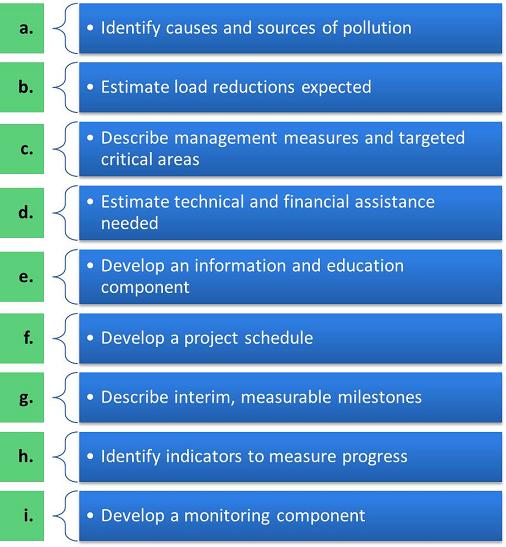Step 4: Design Implementation Program and Assemble the Watershed Plan
Designing your implementation program and assembling the watershed plan generates several of the basic components needed for effective watershed plans. Many of these components are also
key elements listed in the section 319 grant guidelines for developing watershed-based plans. Those included in the guidelines are noted below in italics.
- An information/education component to support public participation (element e).
- A schedule for implementing management measures (element f).
- Interim milestones to determine whether management measures are being implemented (element g).
- Criteria by which to measure progress toward reducing pollutant loads and meeting watershed goals (element h).
- A monitoring component to evaluate the effectiveness of implementation efforts (element i).
- An evaluation framework and process.
- An estimate of the technical and financial resources and authorities needed to implement the plan.
- Assignment of responsibilities.
For more information on designing implementation plans, see Chapter 12 of EPA’s
Handbook for Developing Watershed Plans to Restore and Protect Our Waters.
![[logo] US EPA](https://www.epa.gov/epafiles/images/logo_epaseal.gif)






